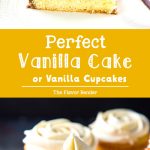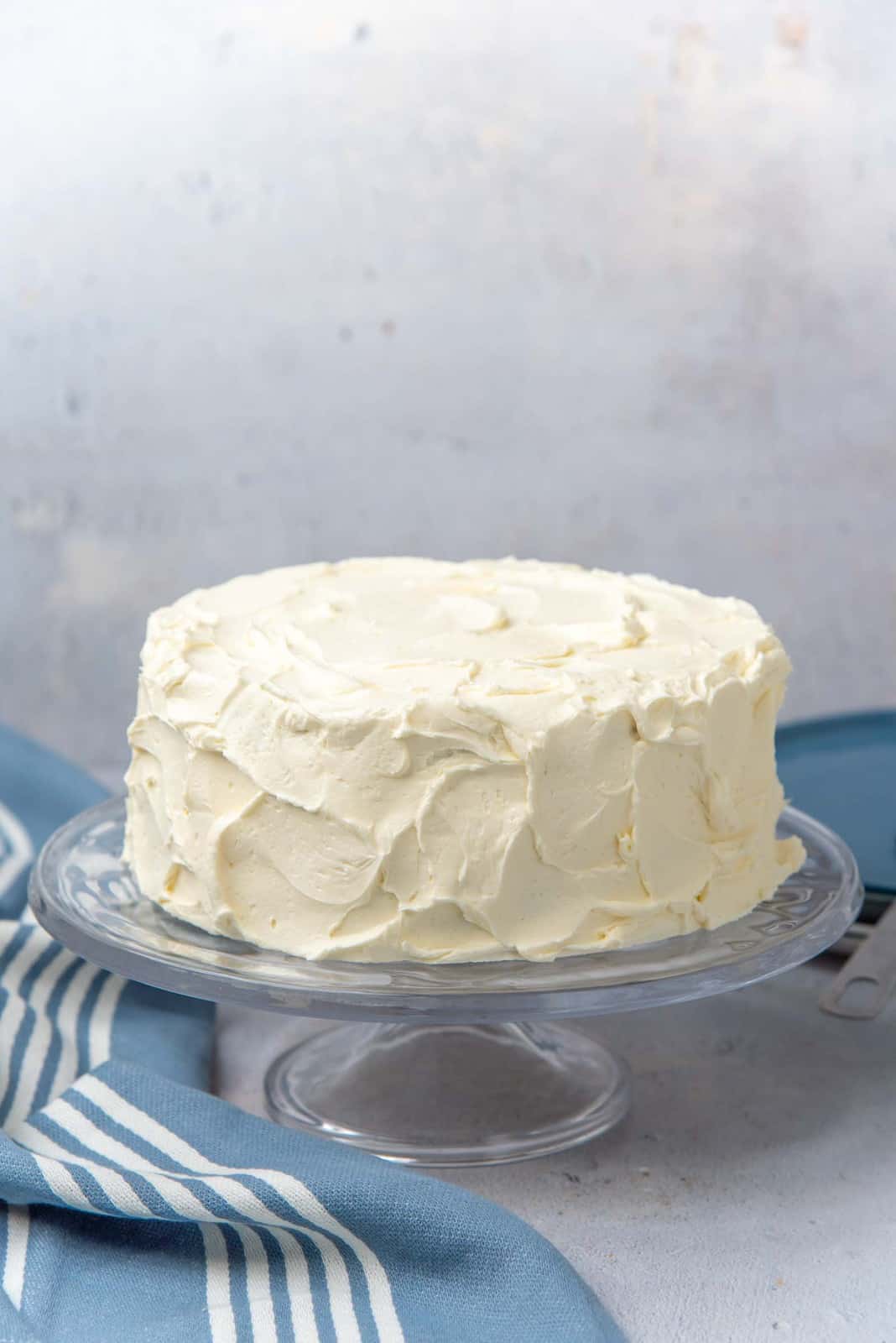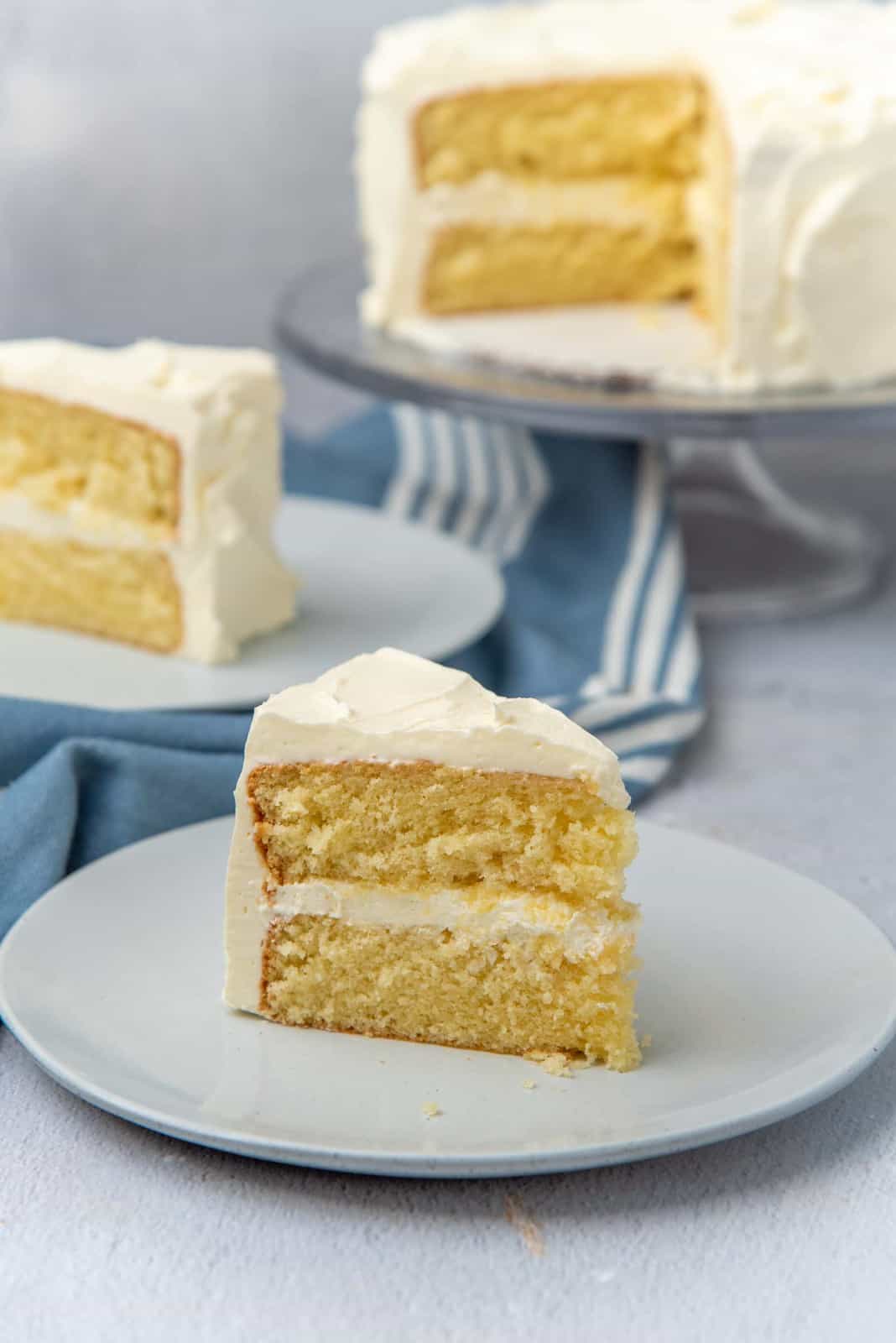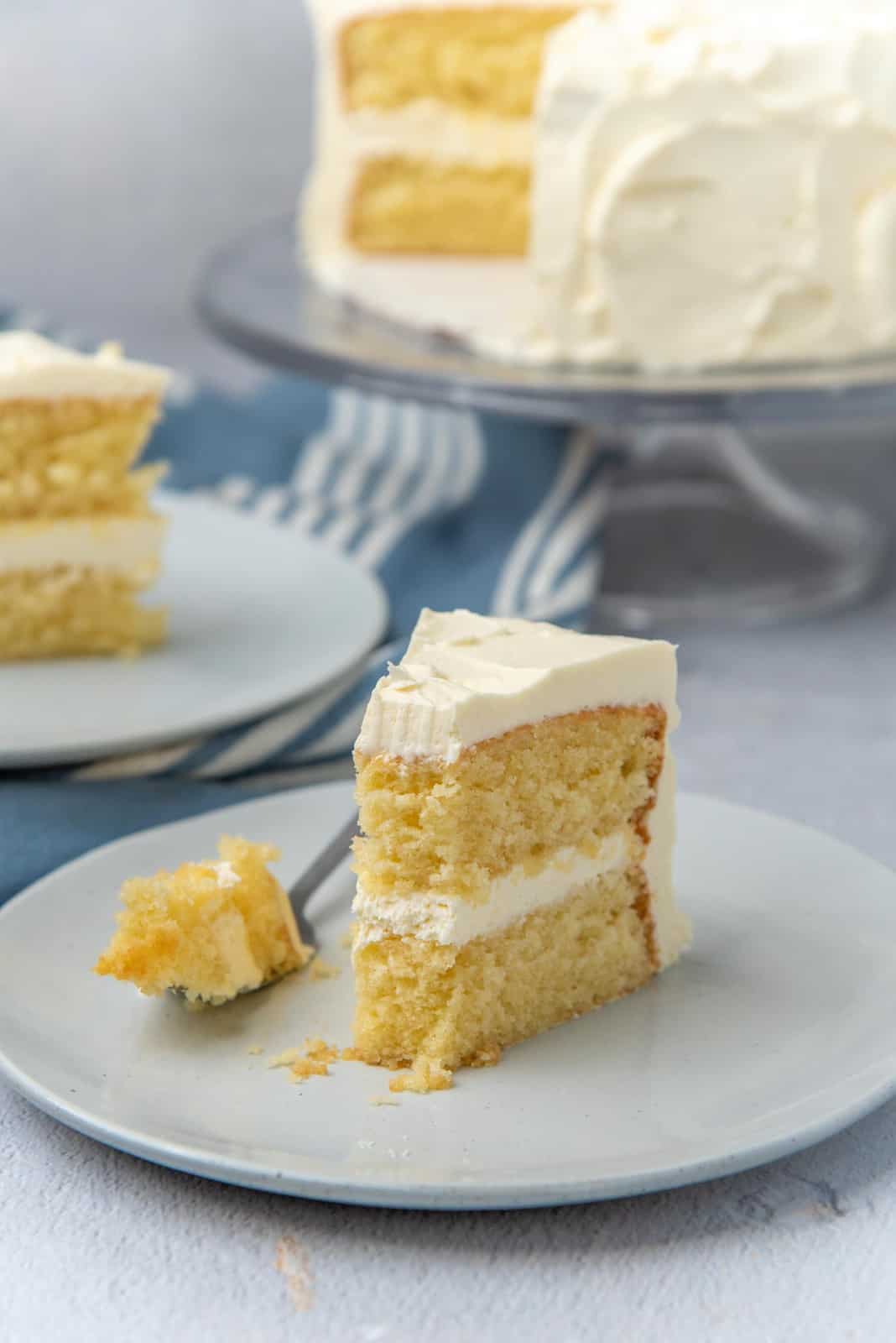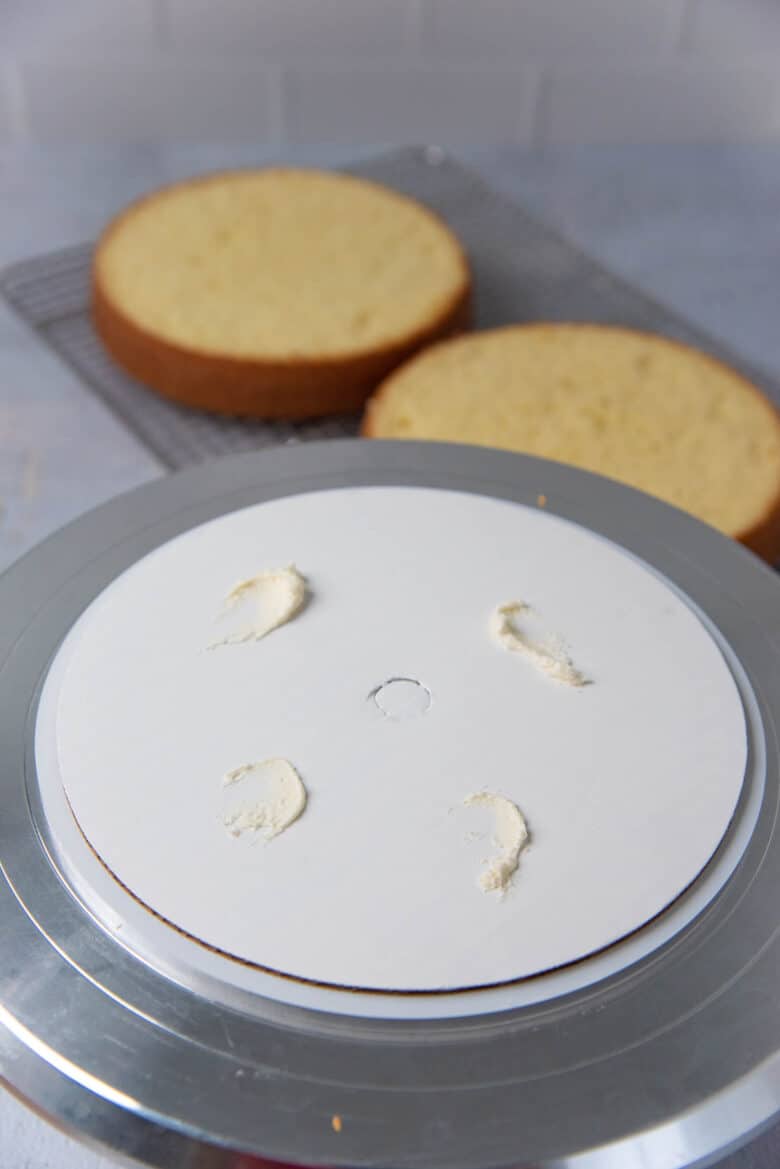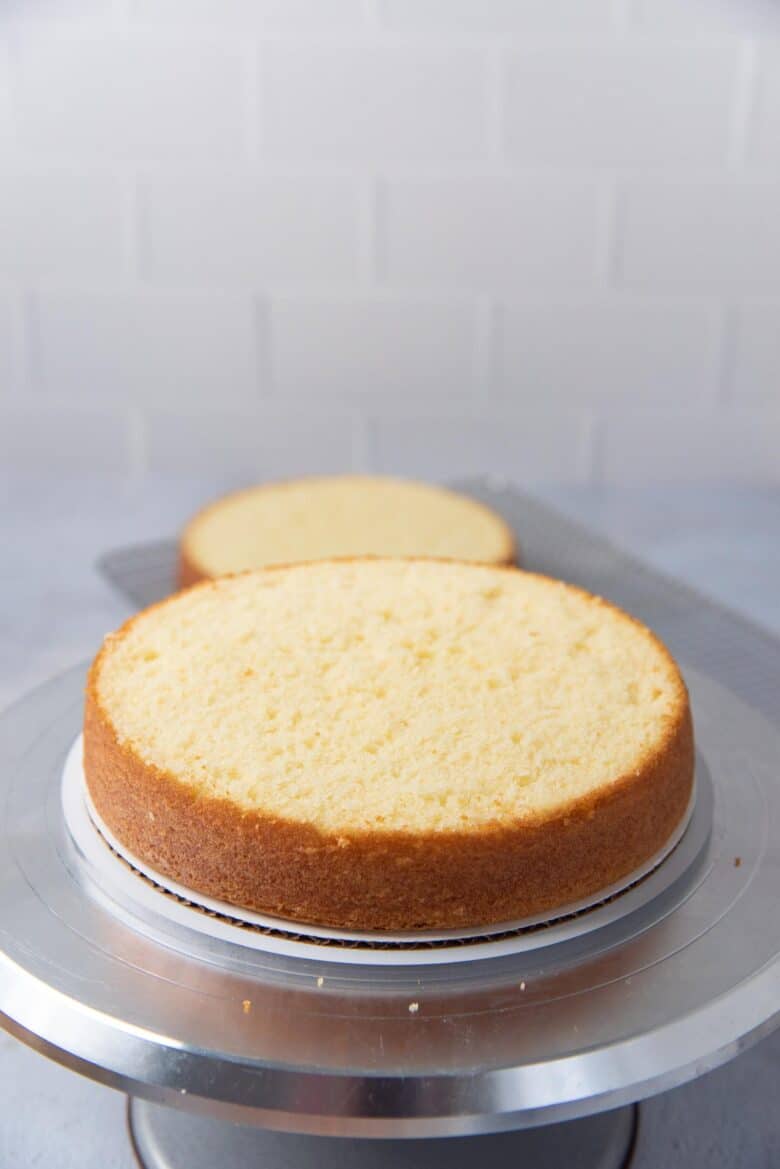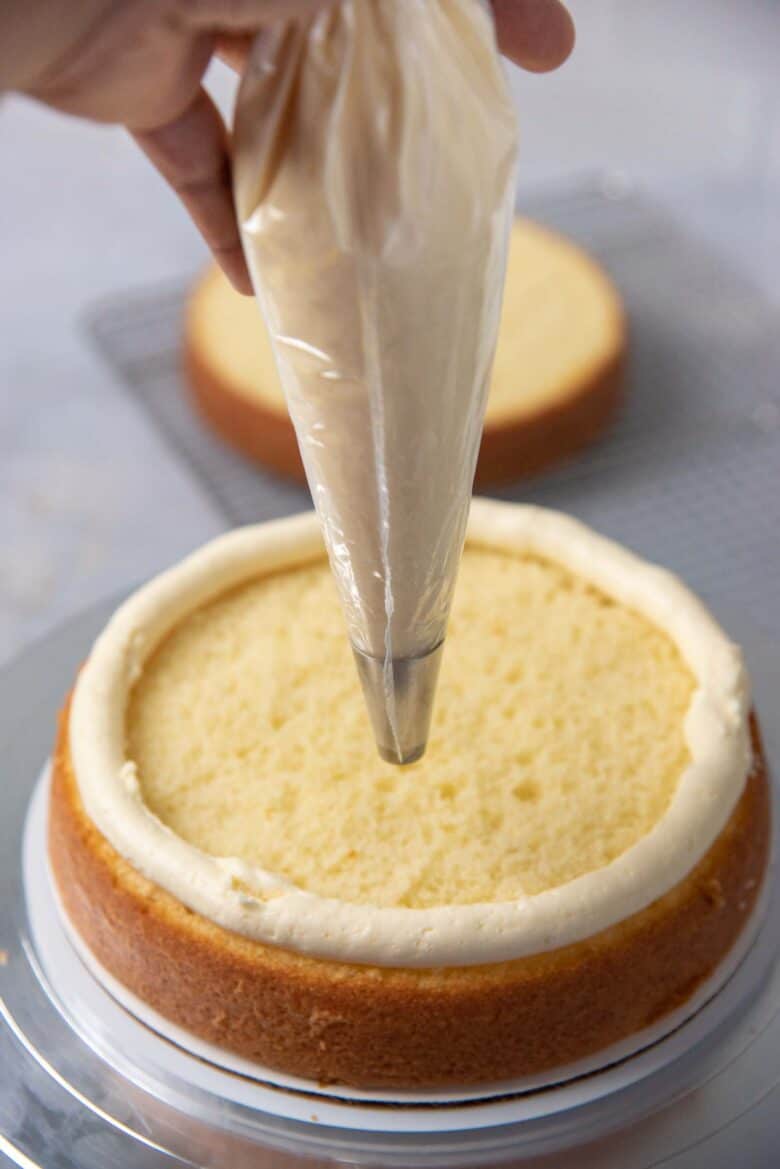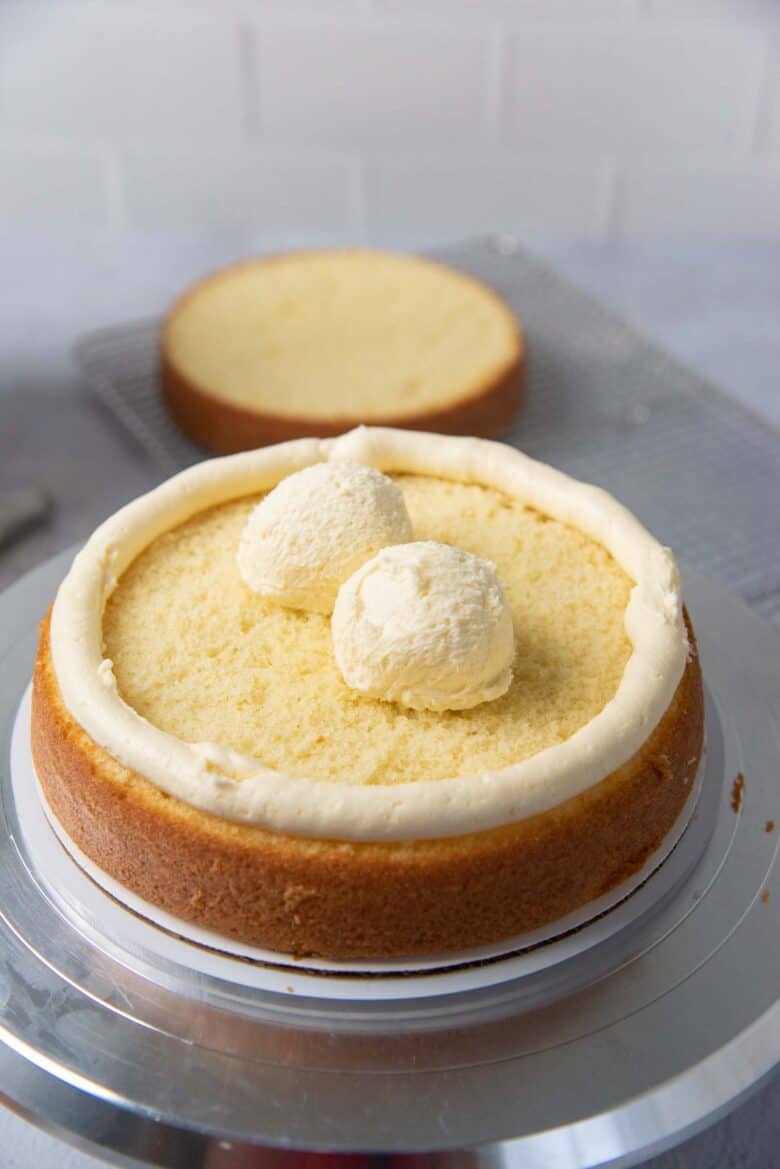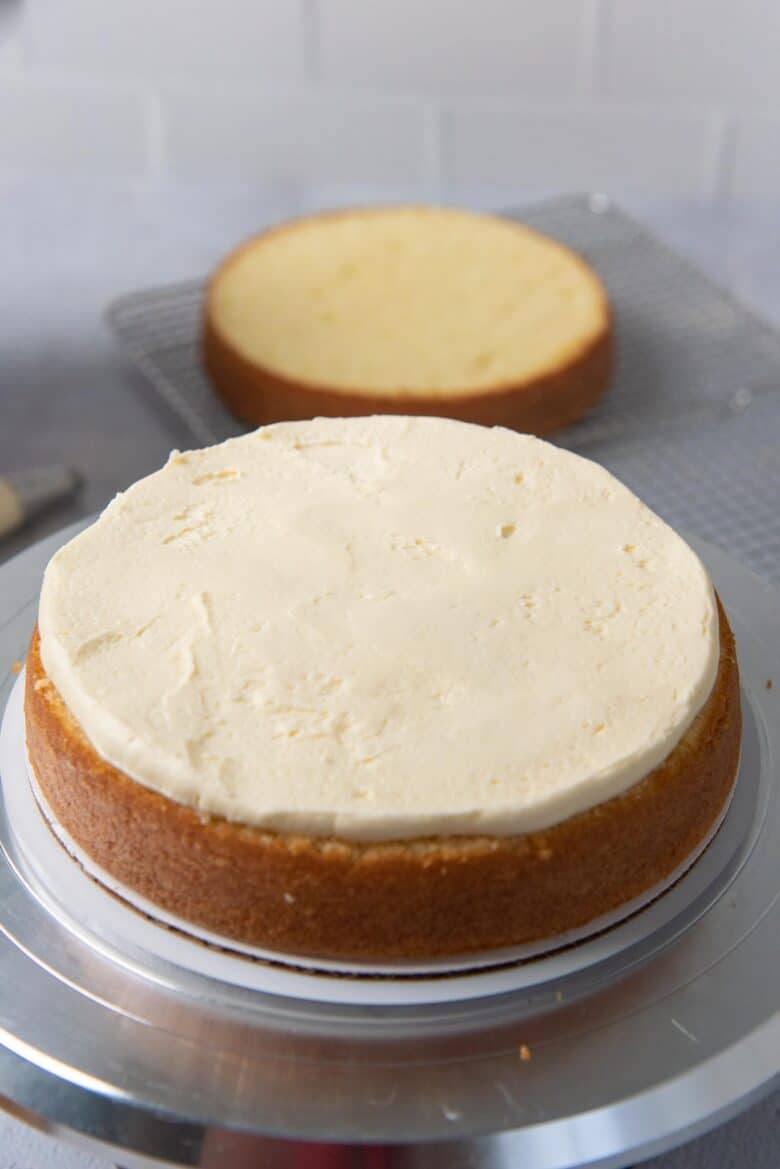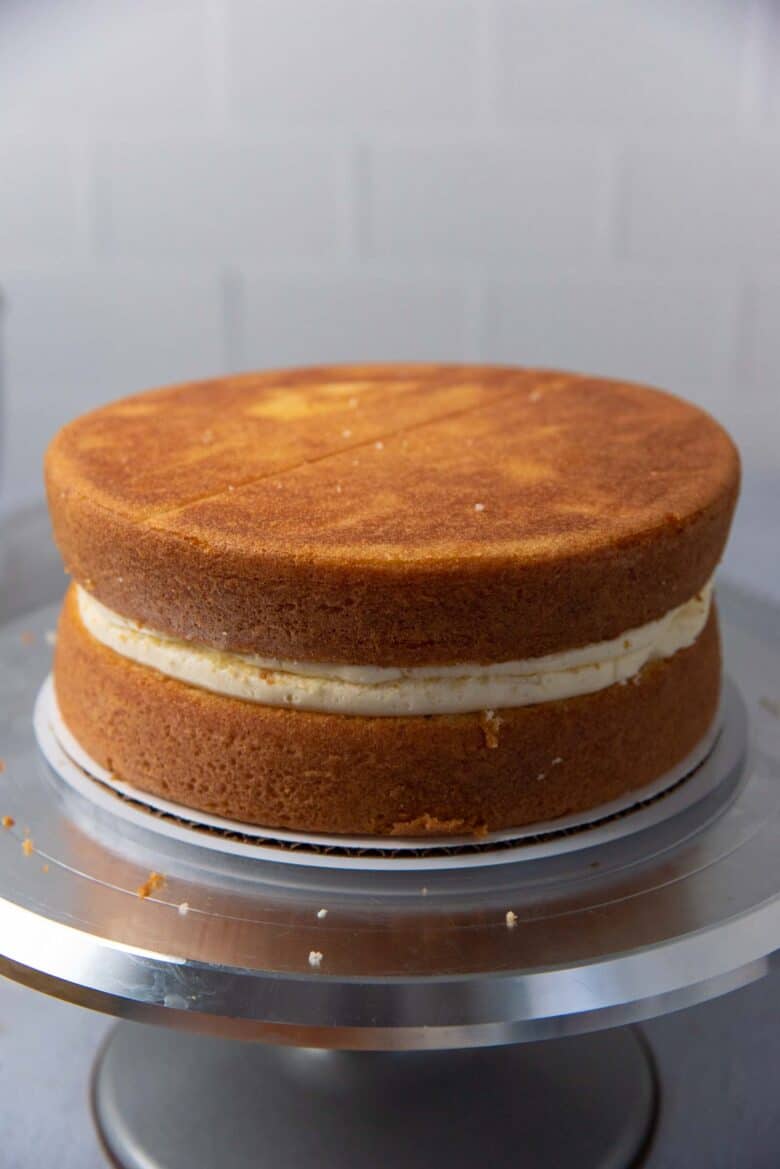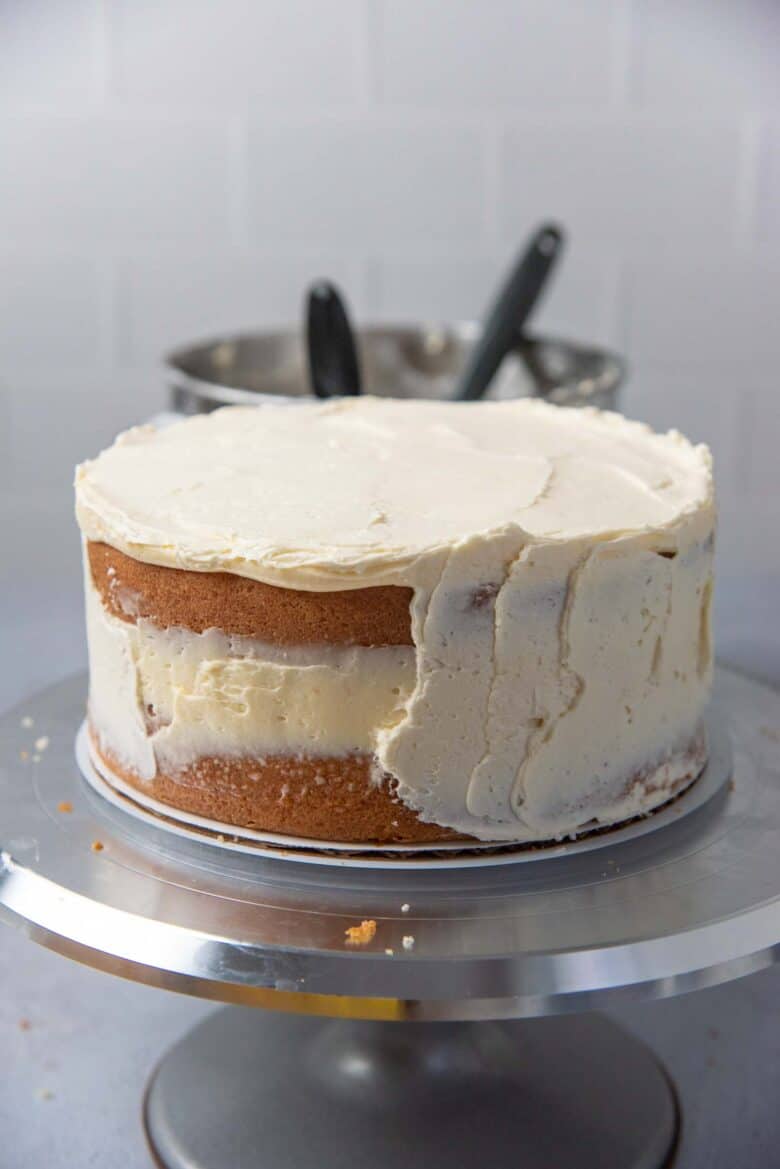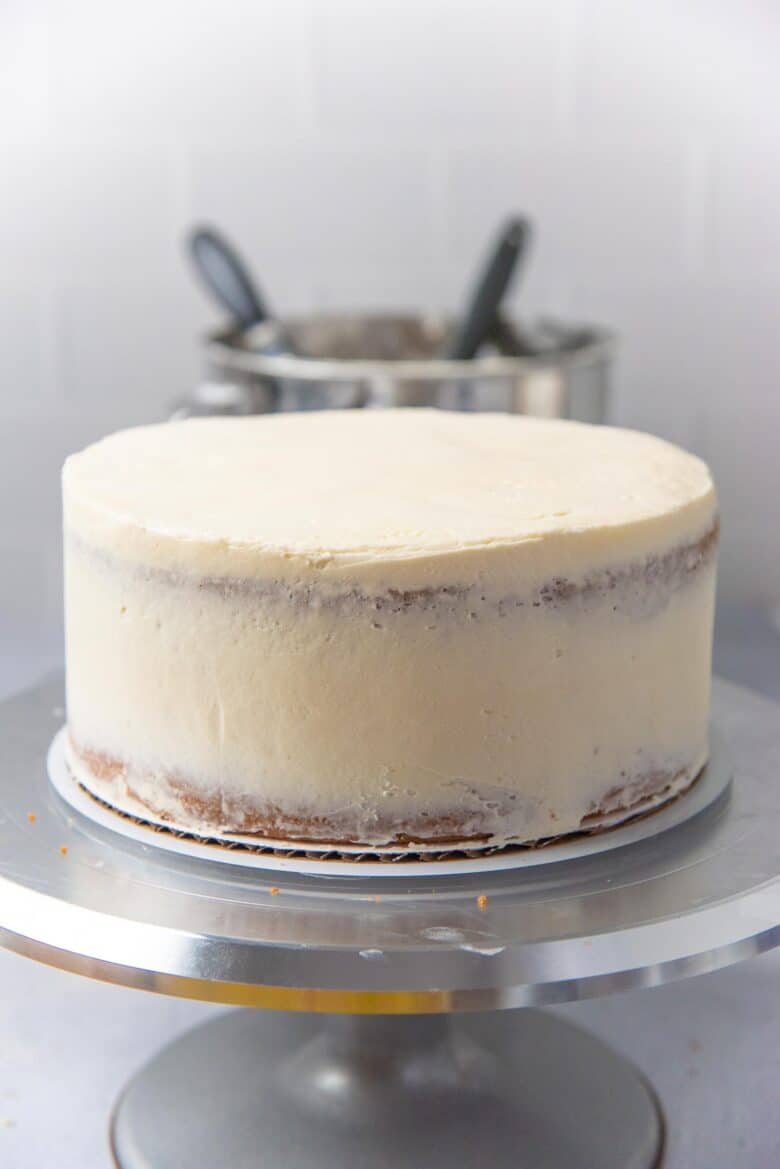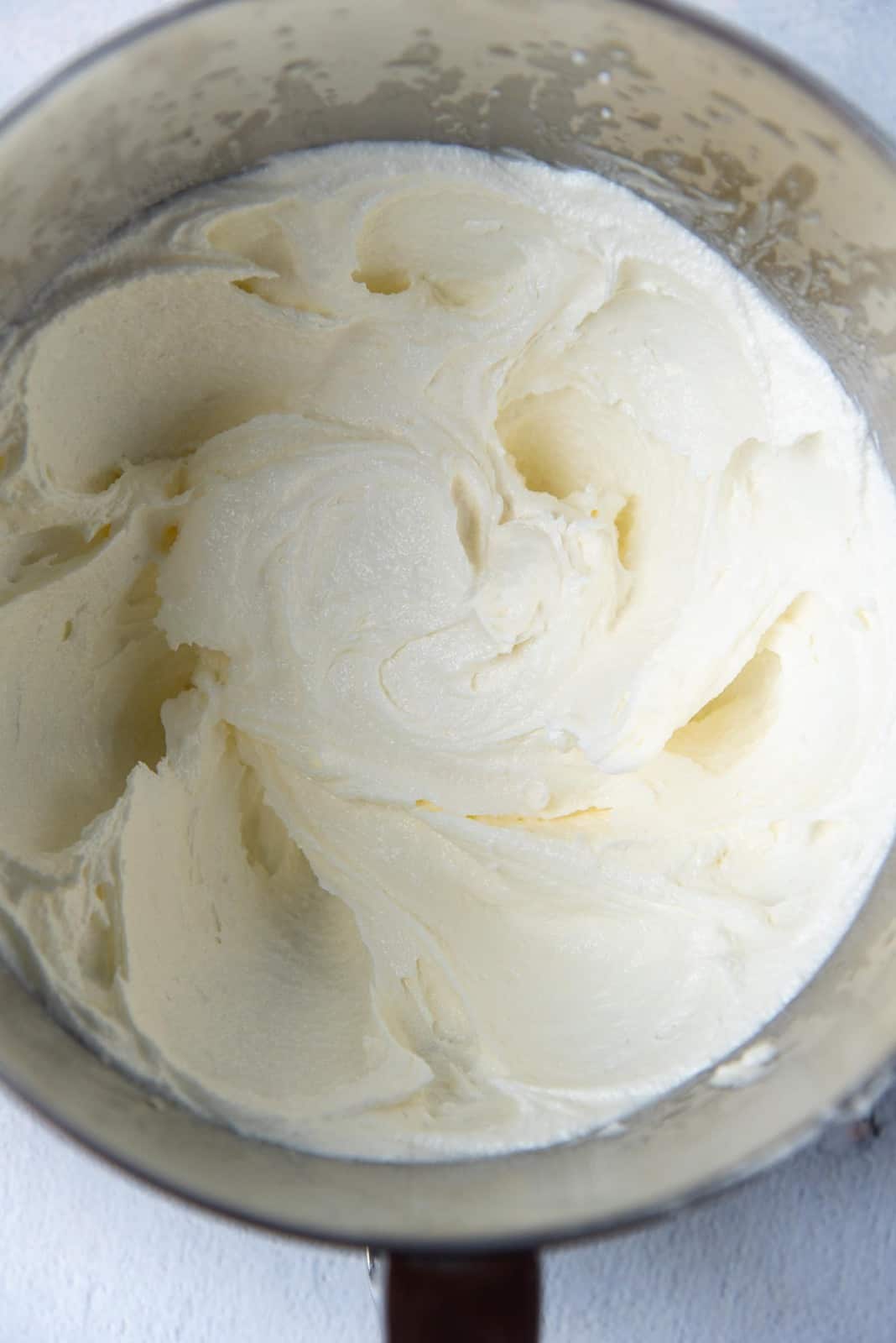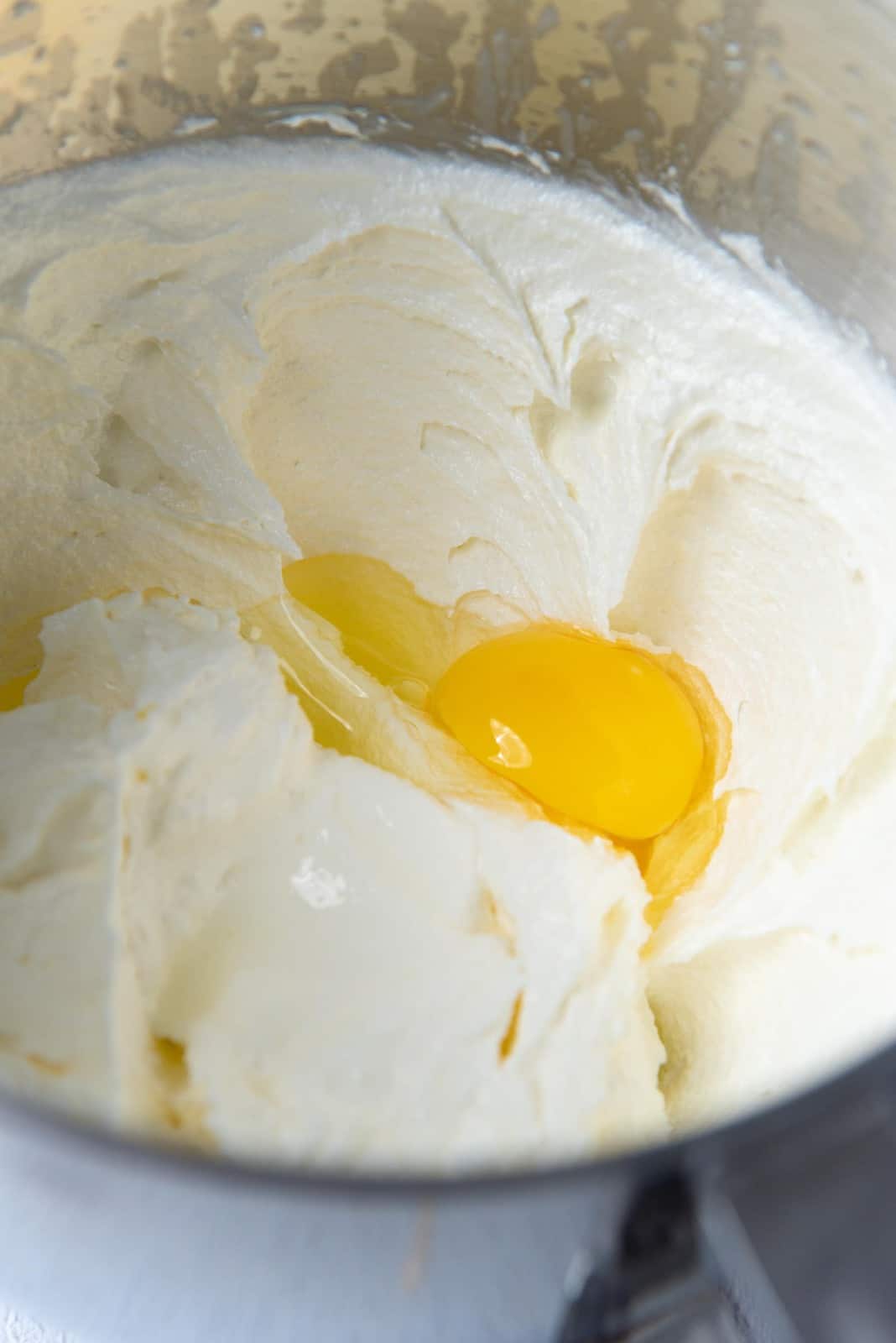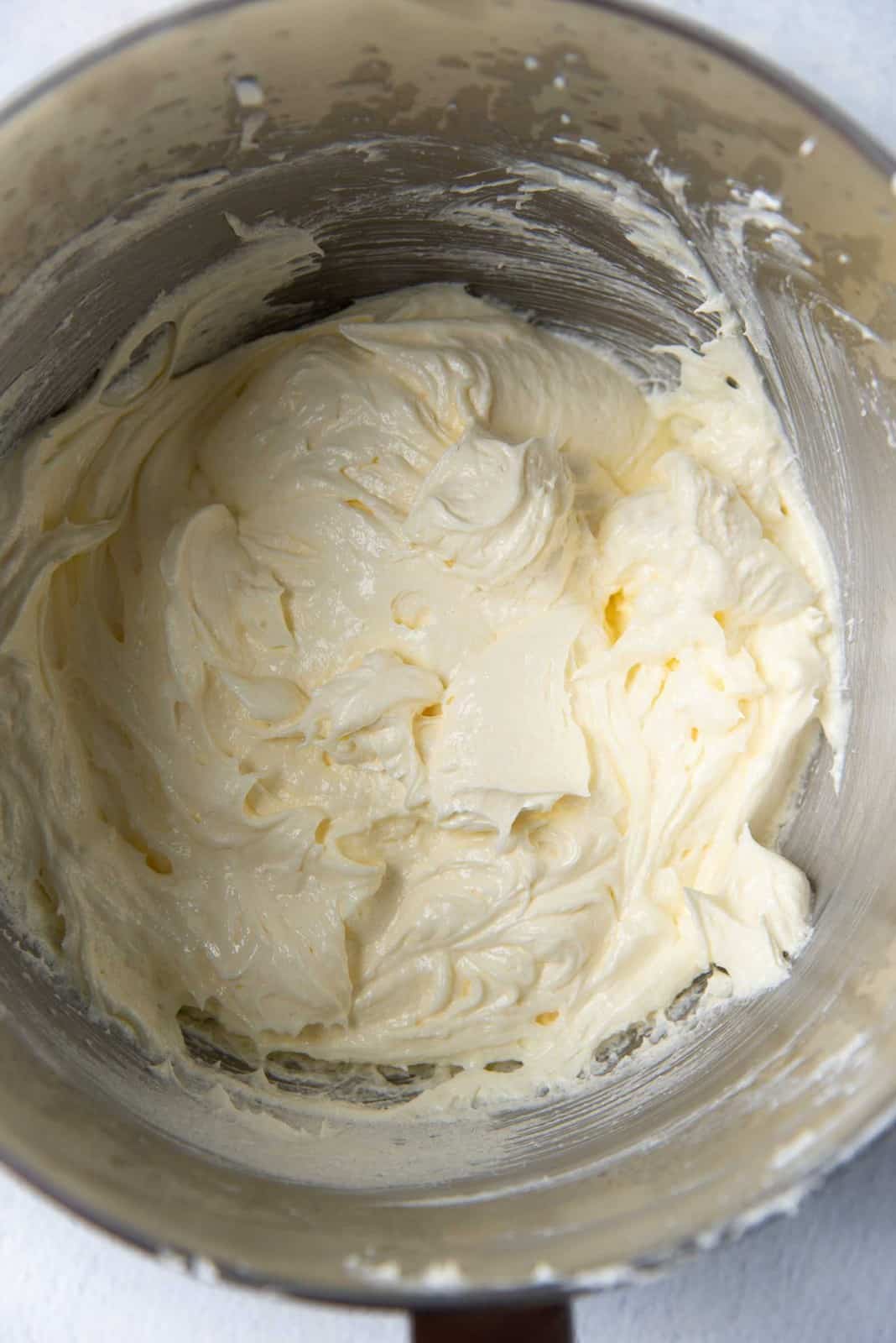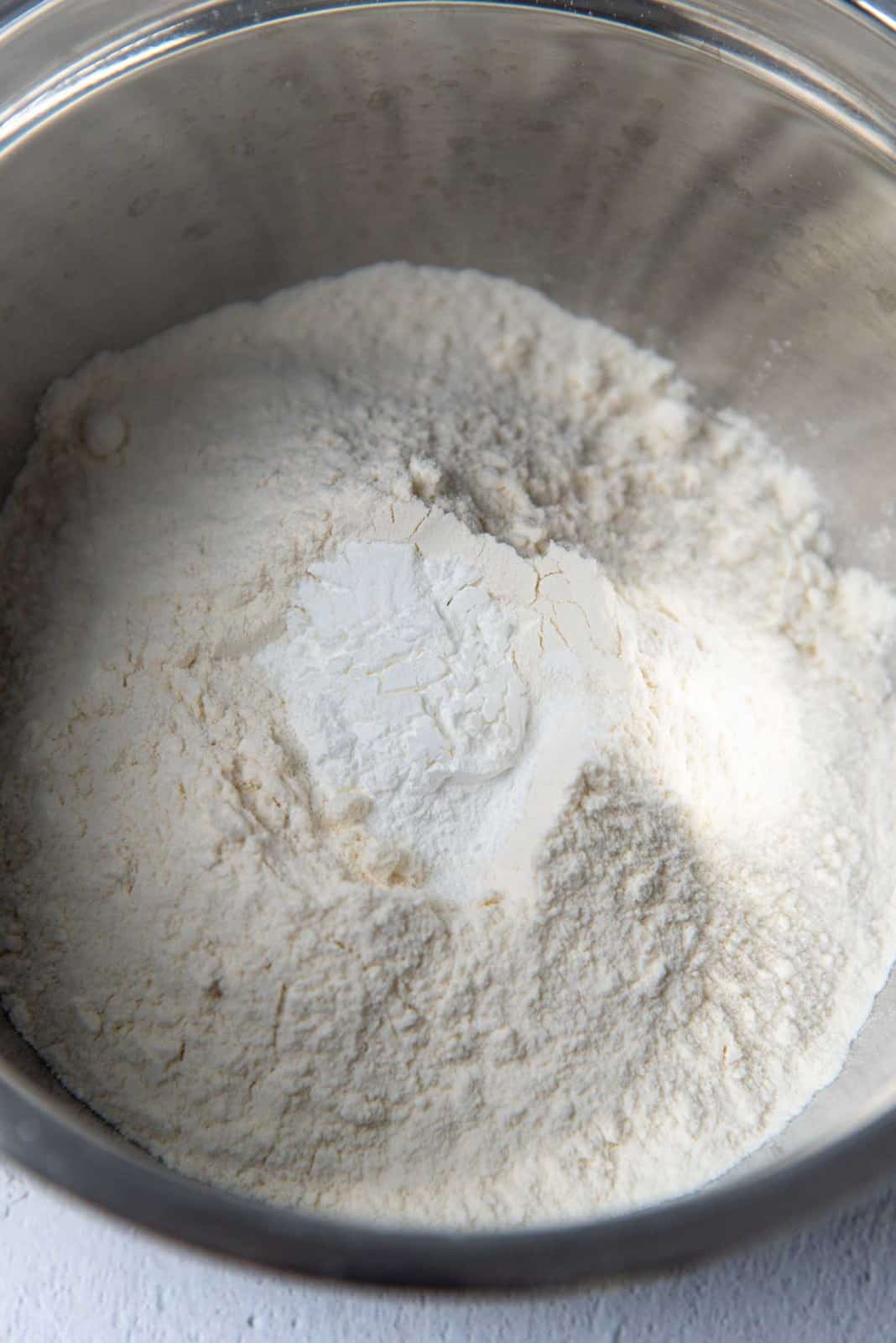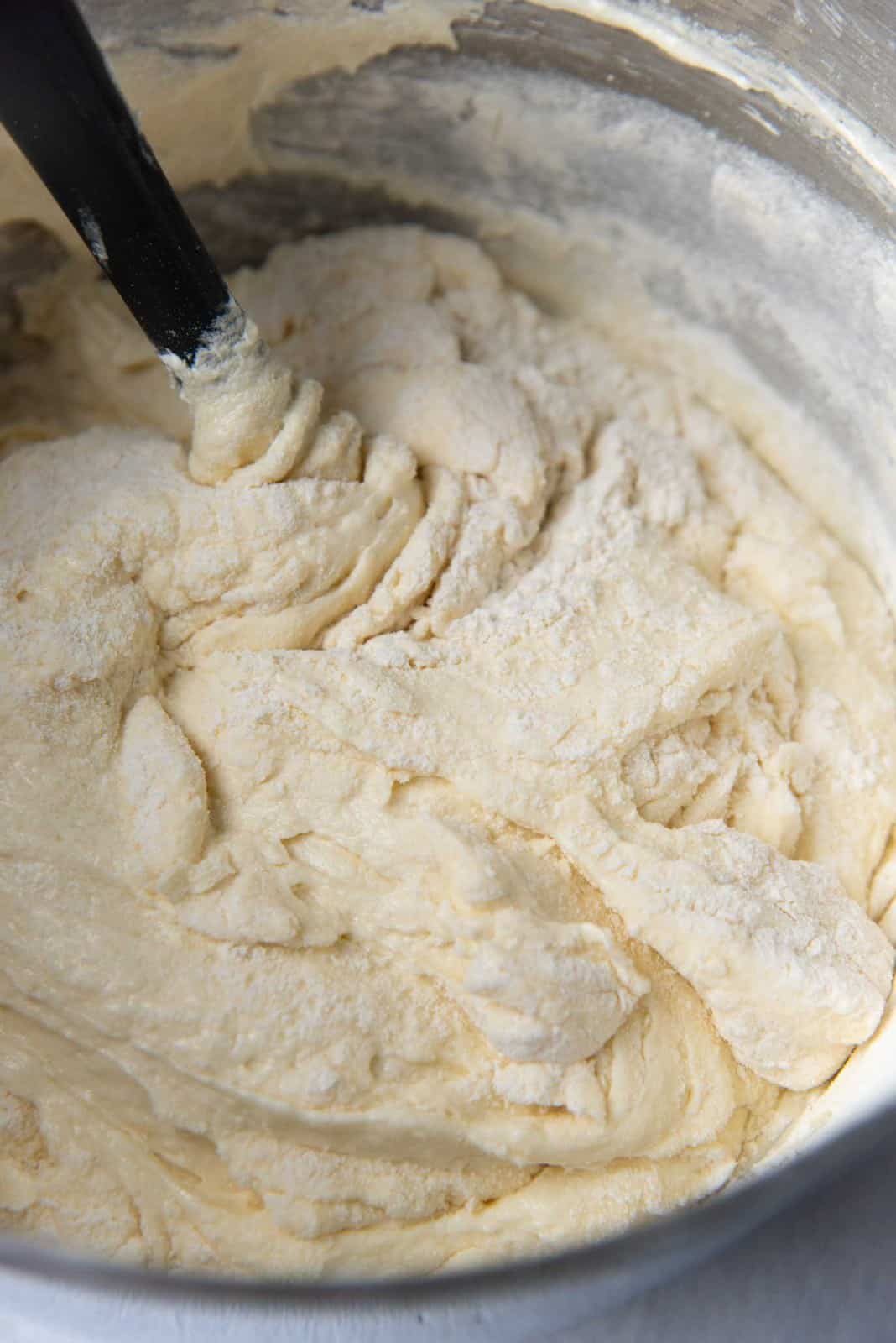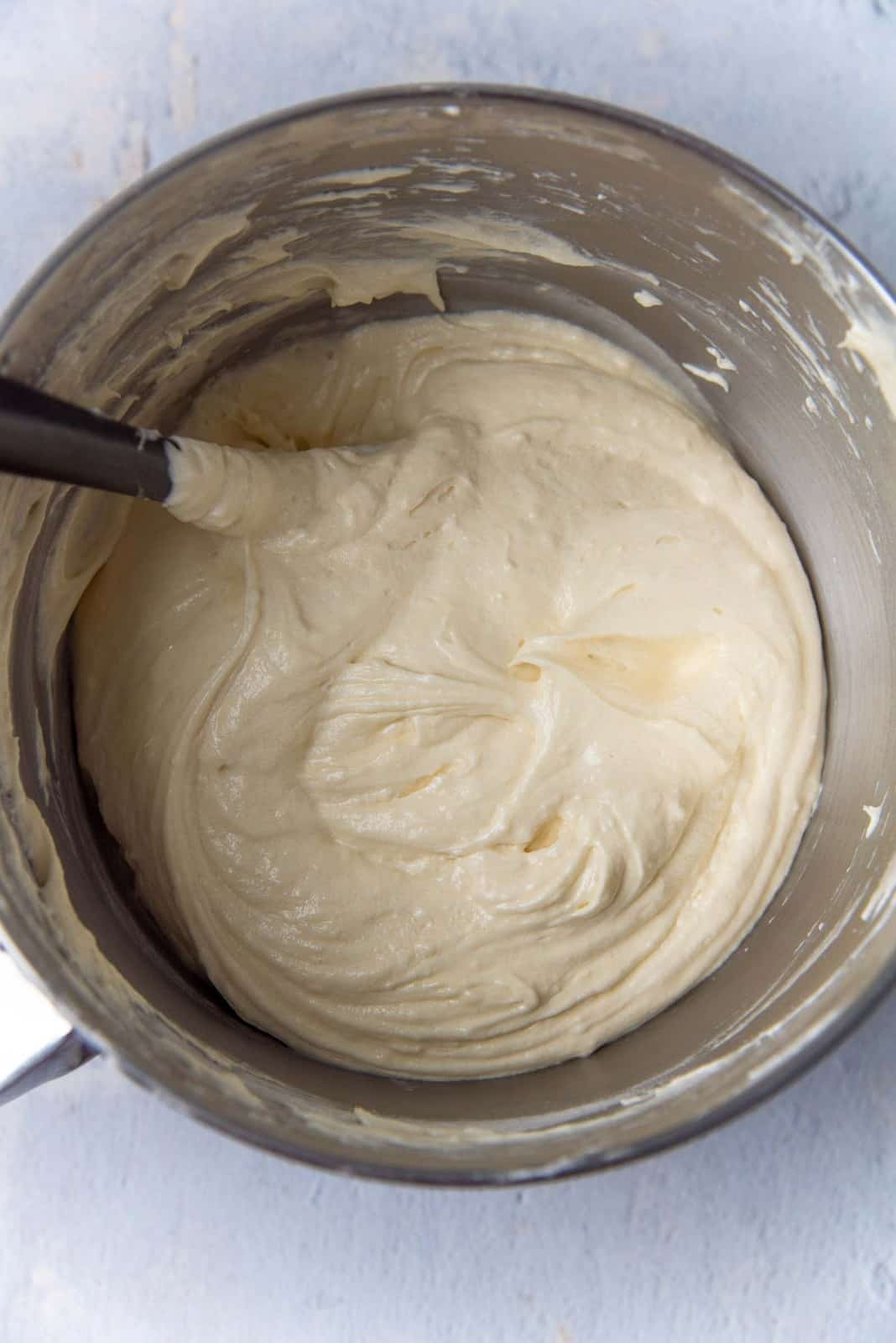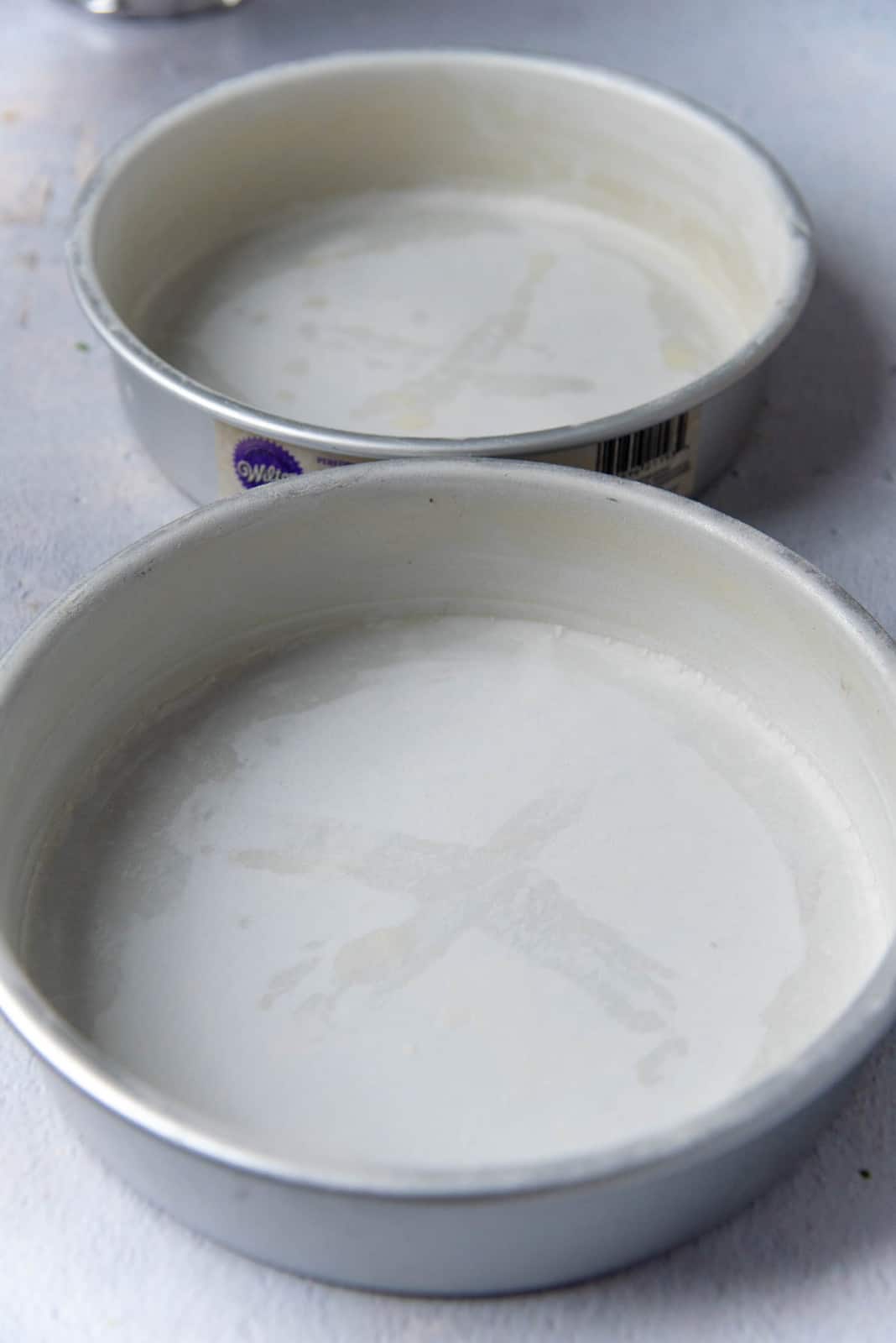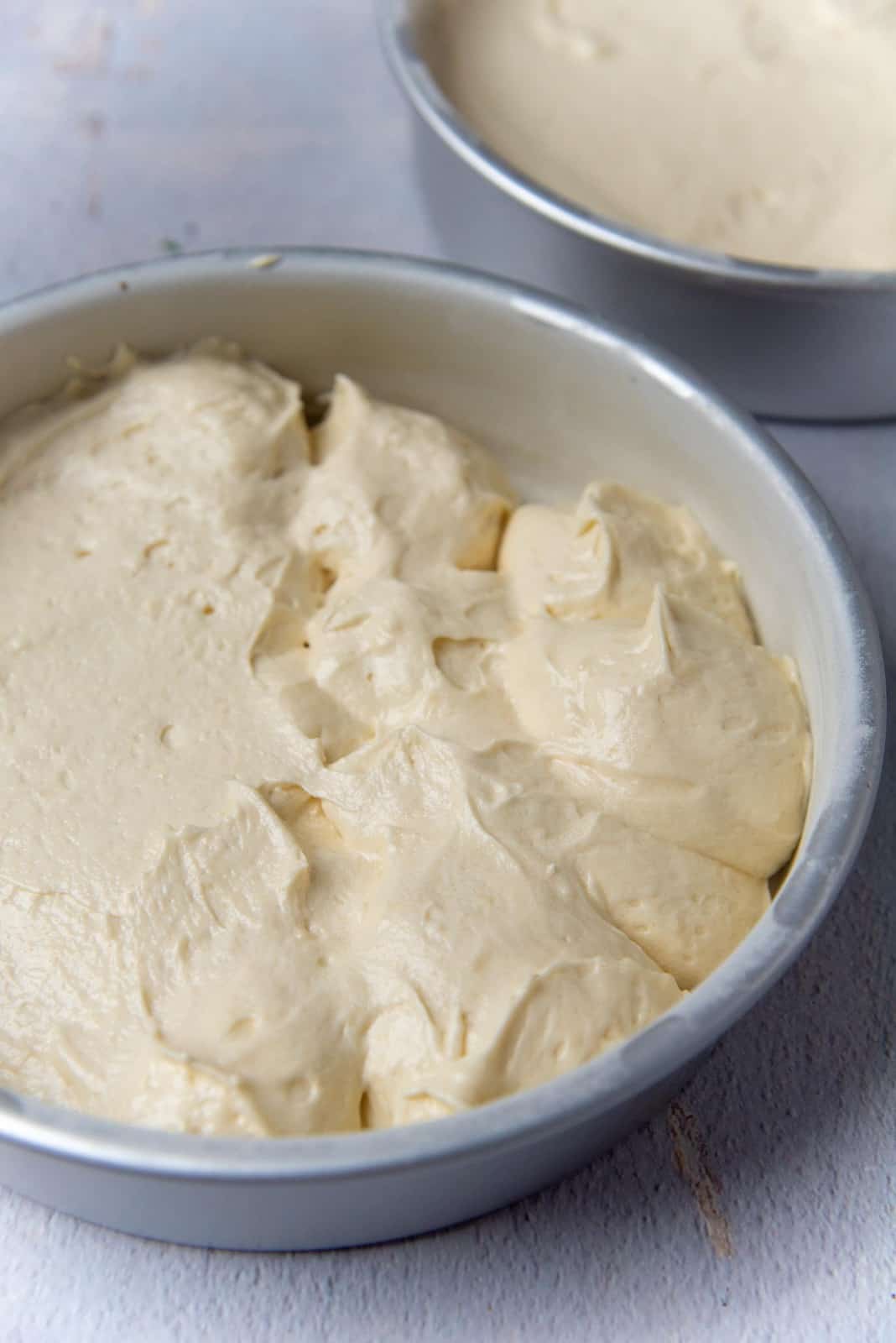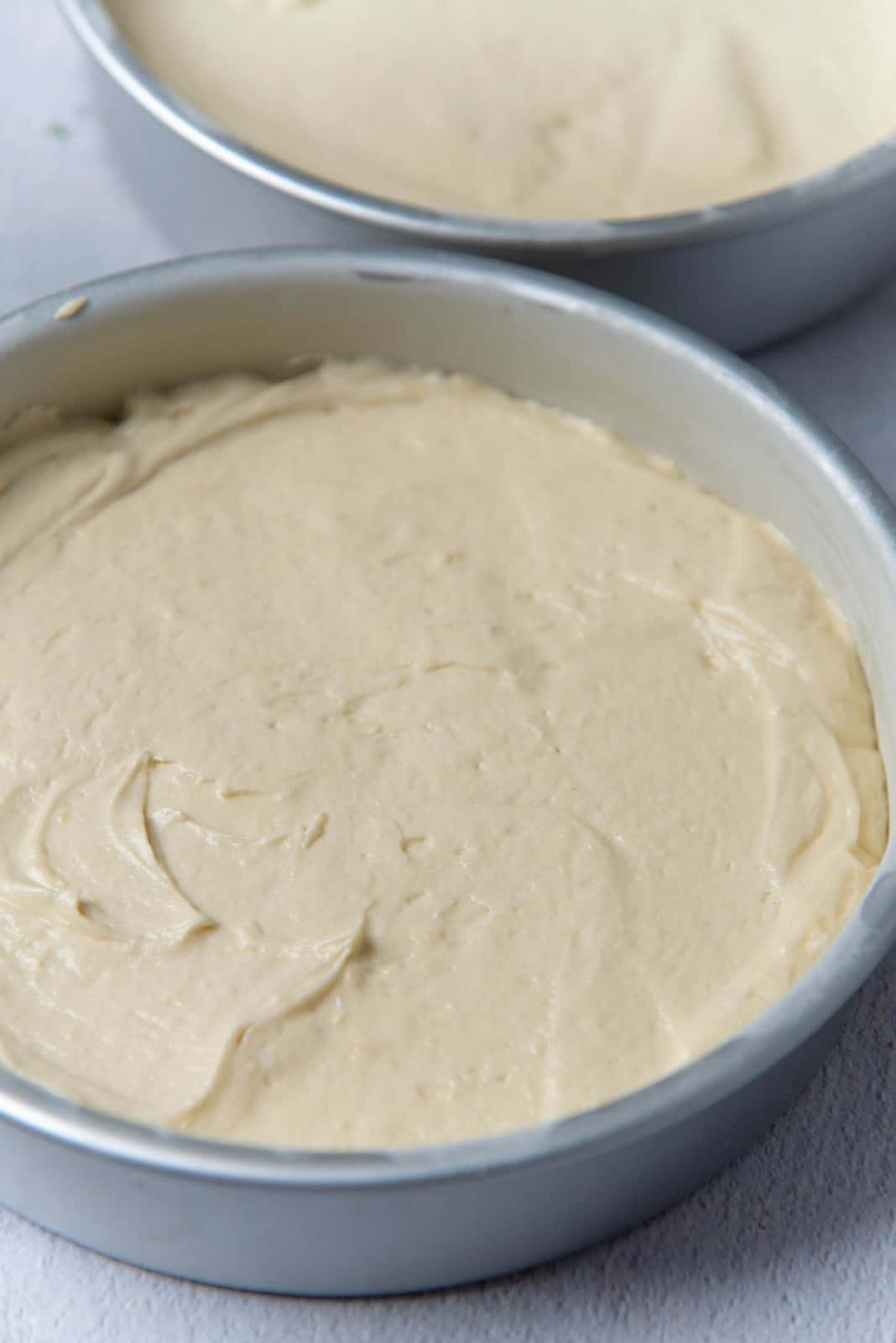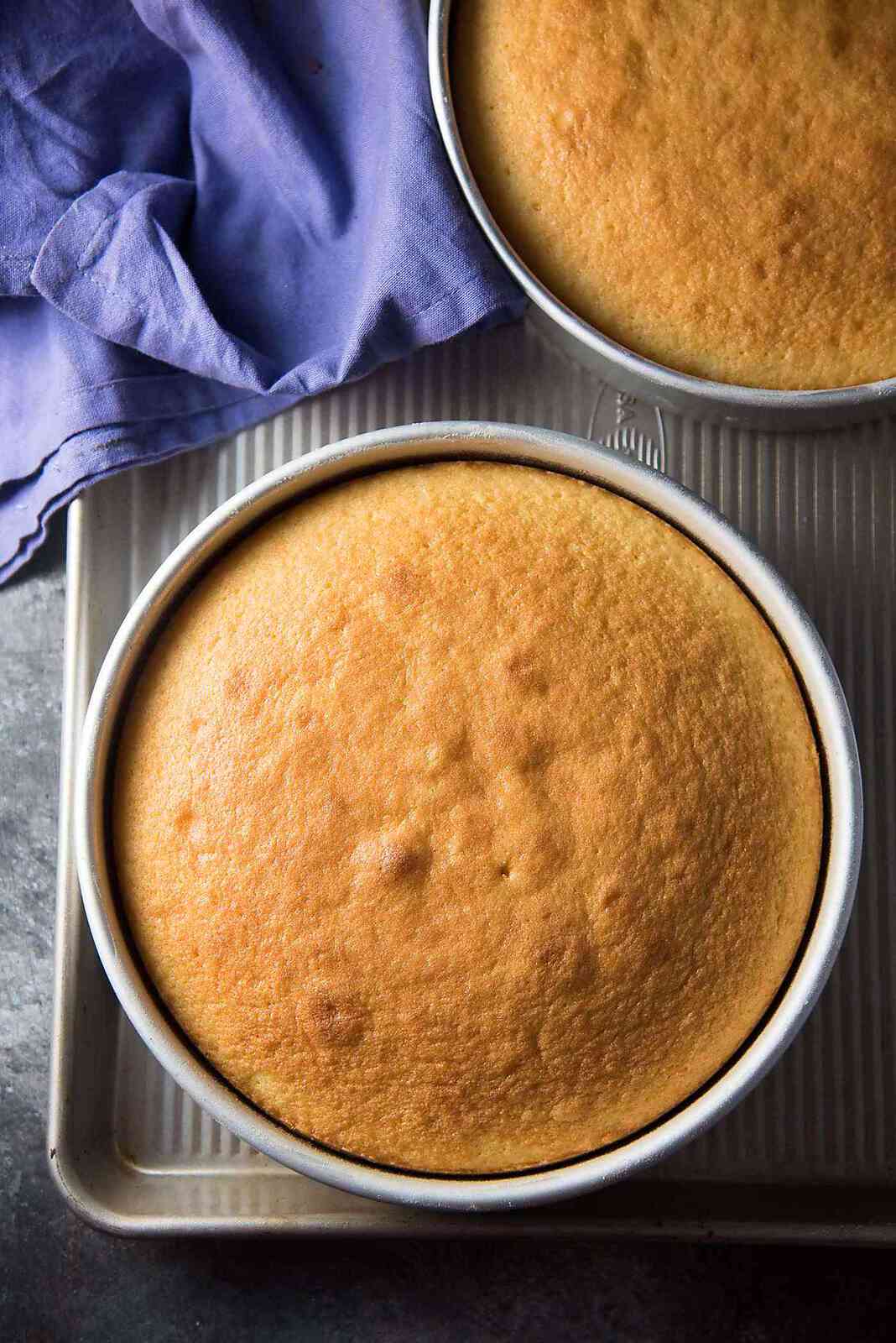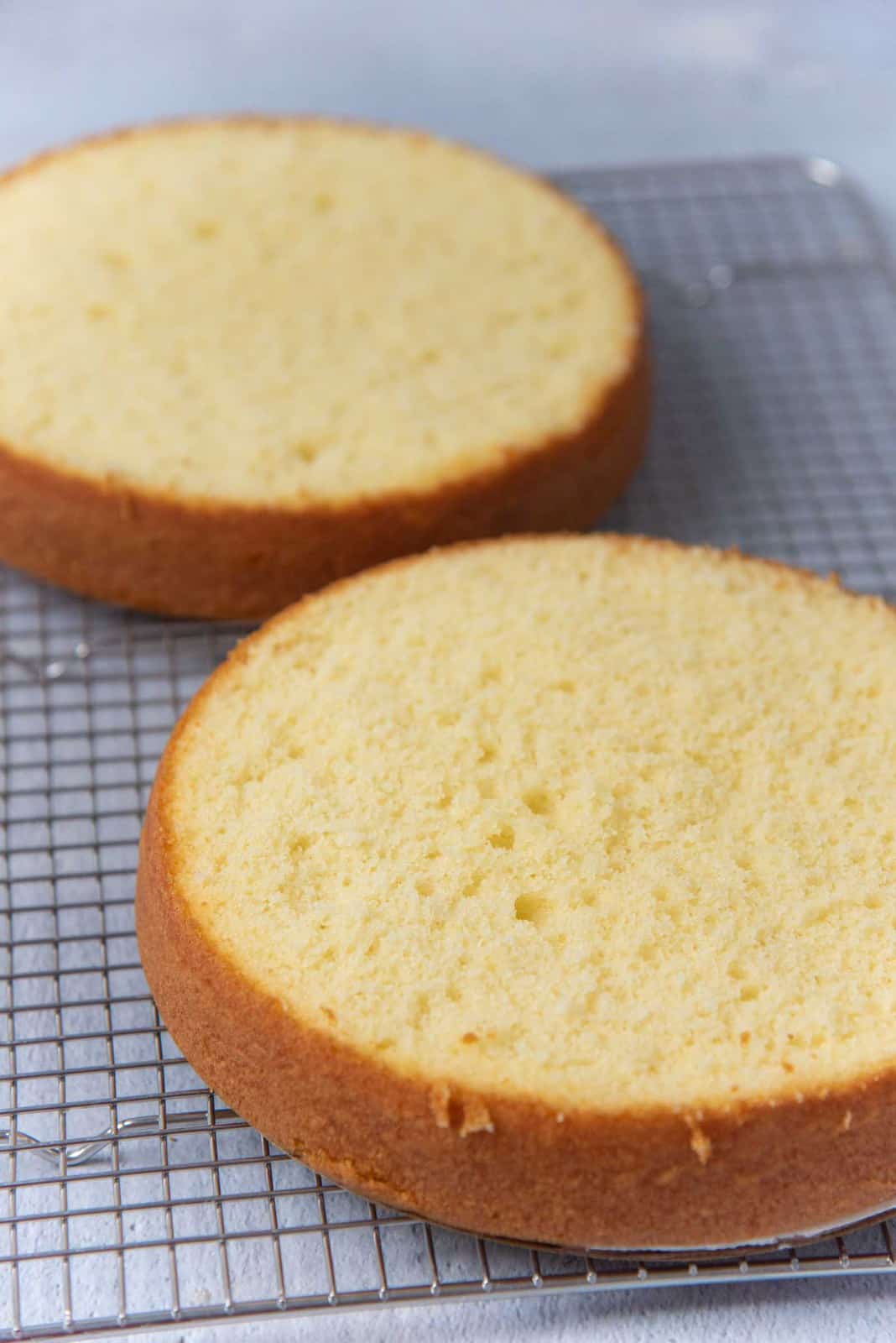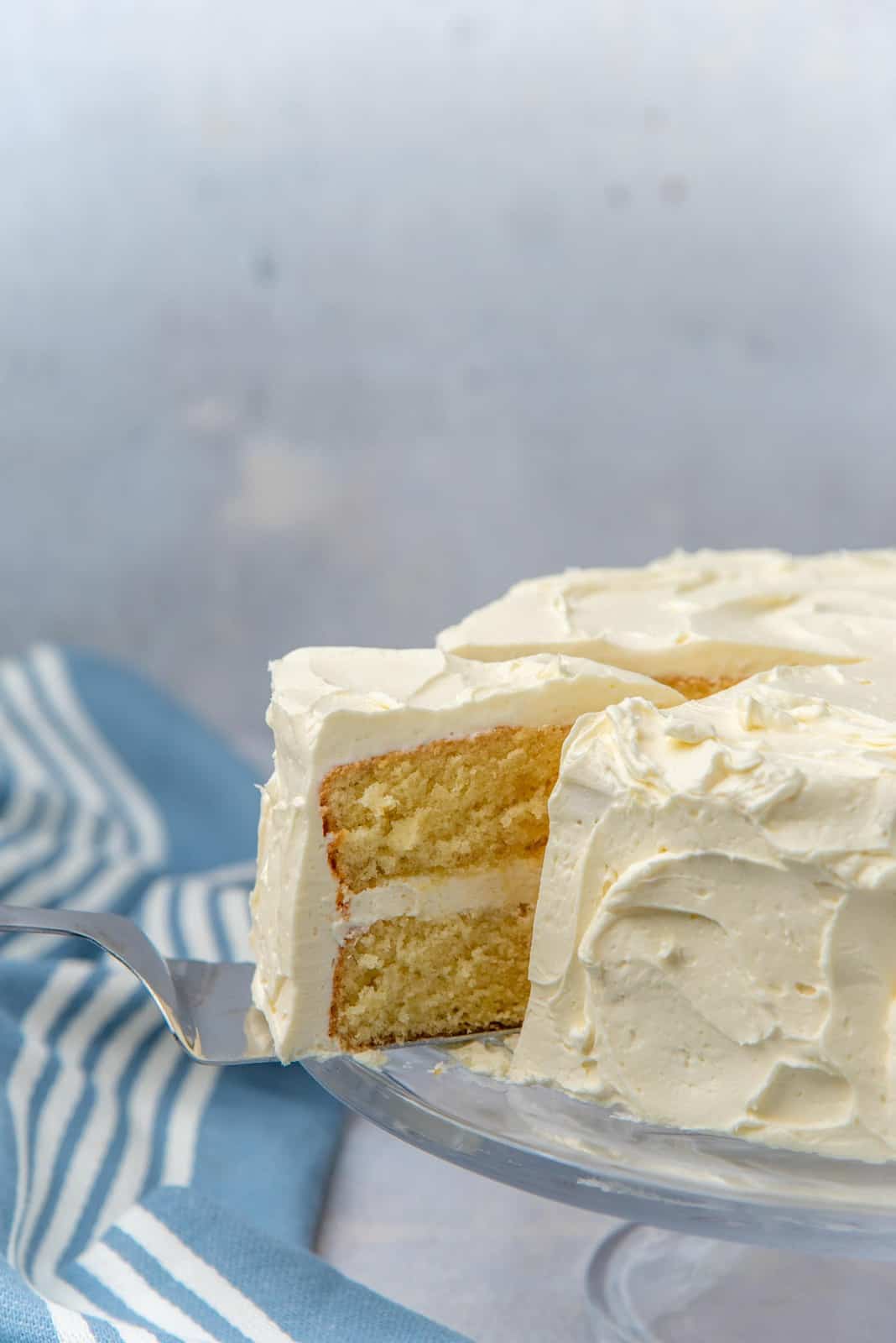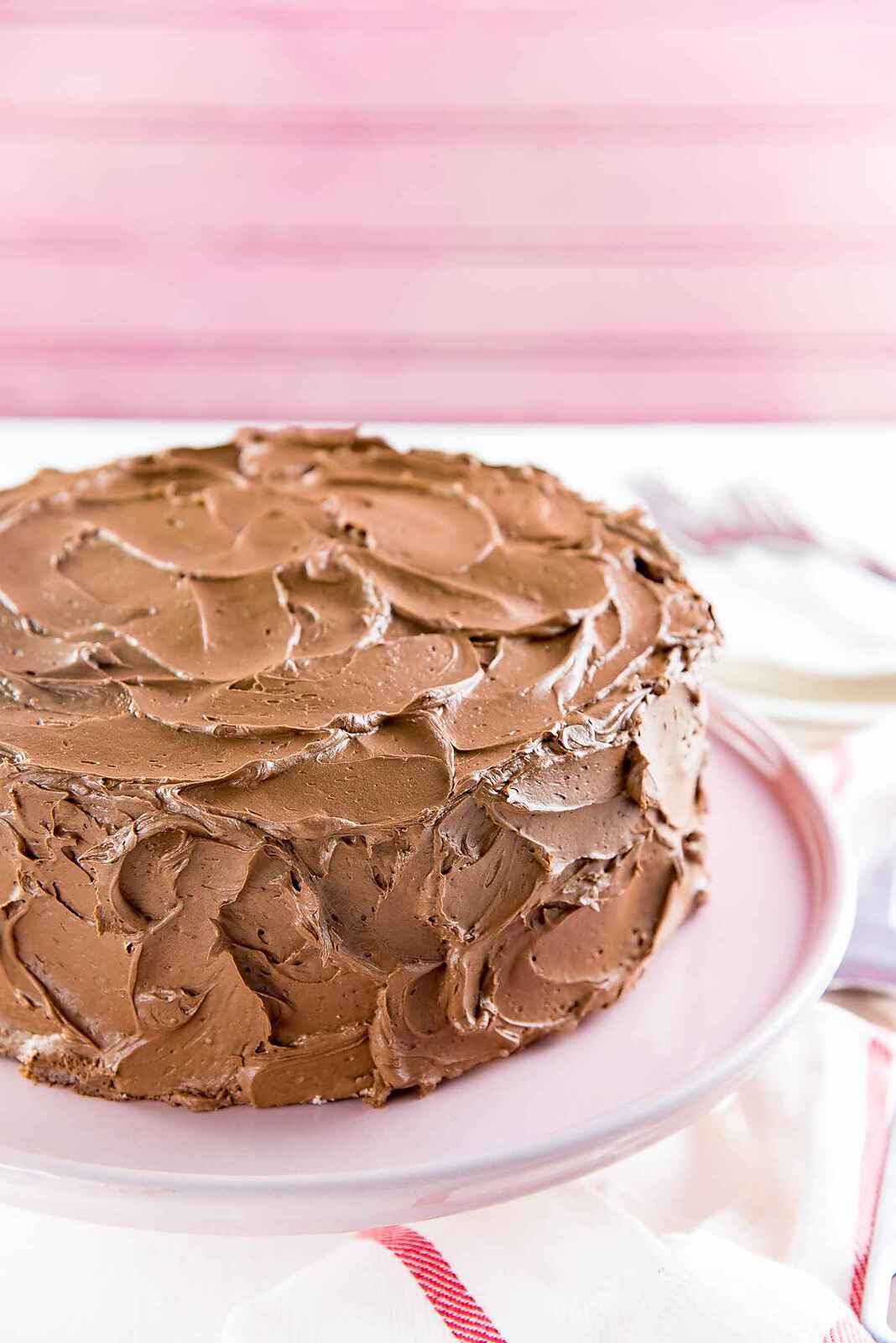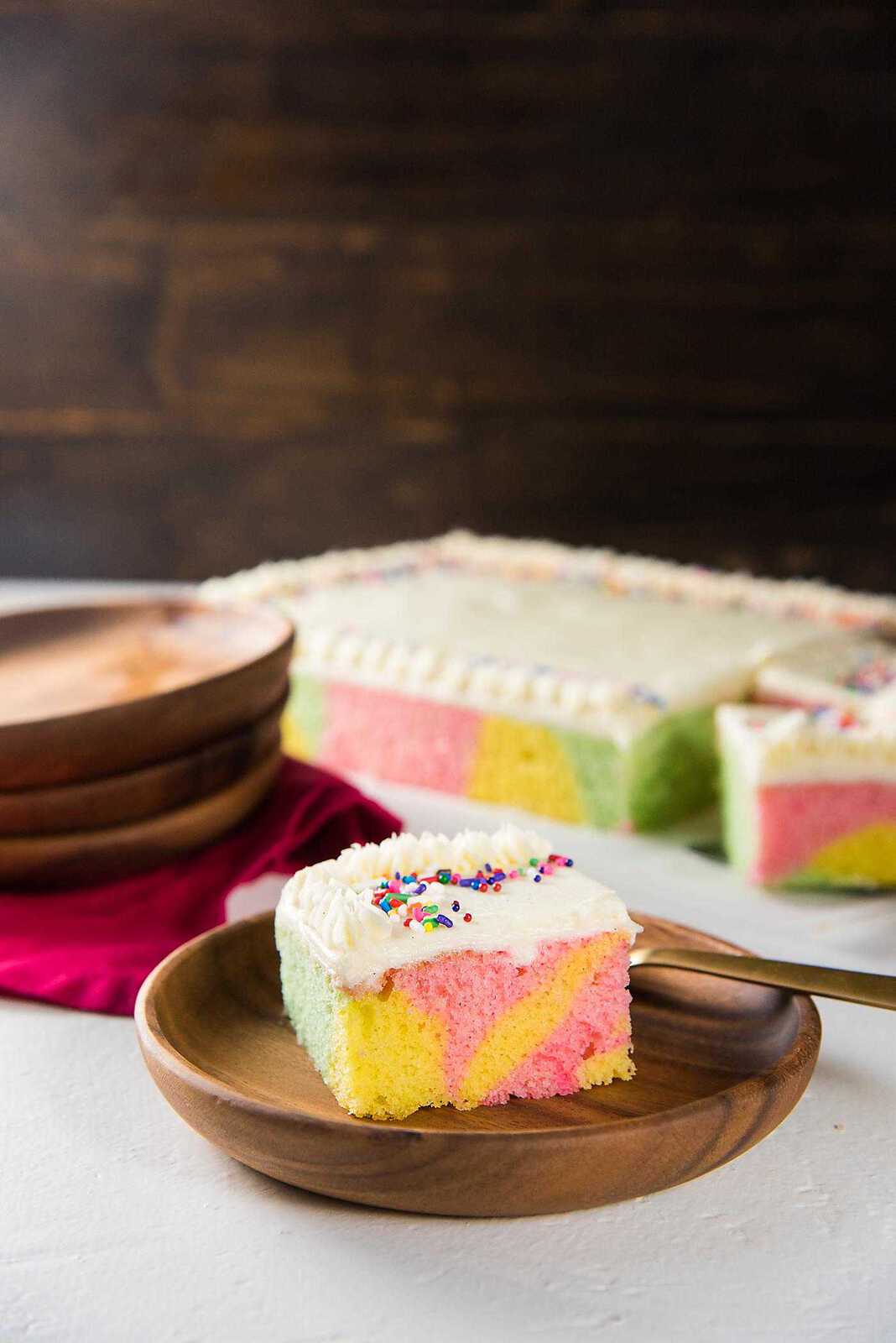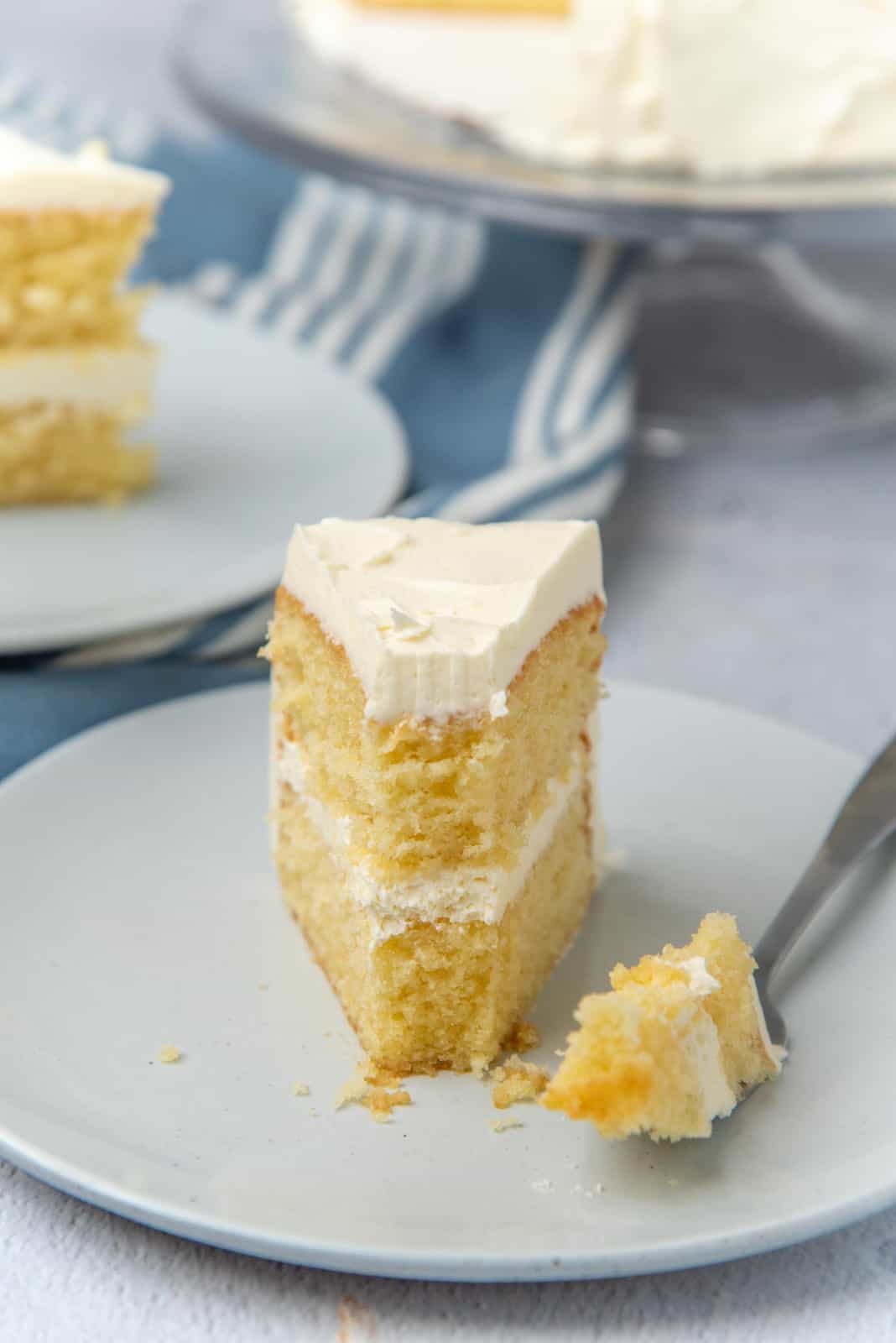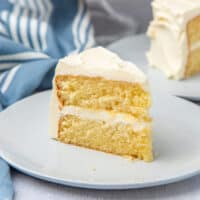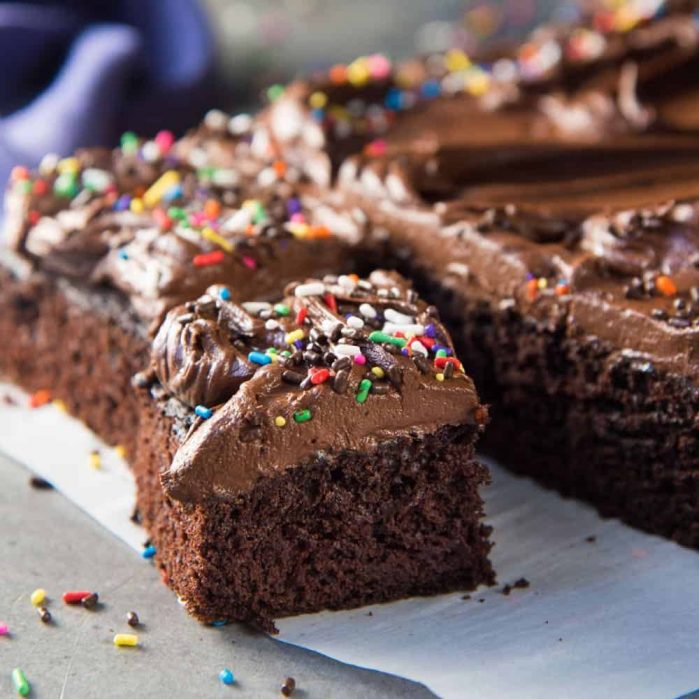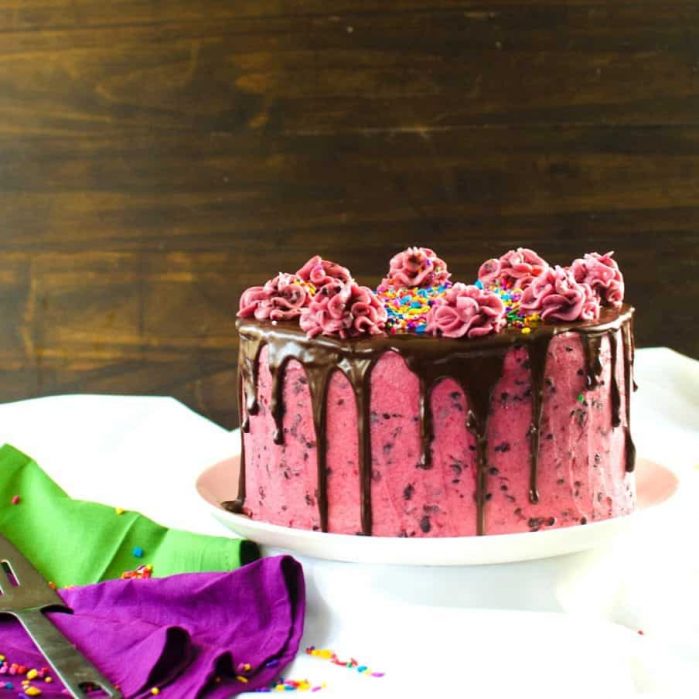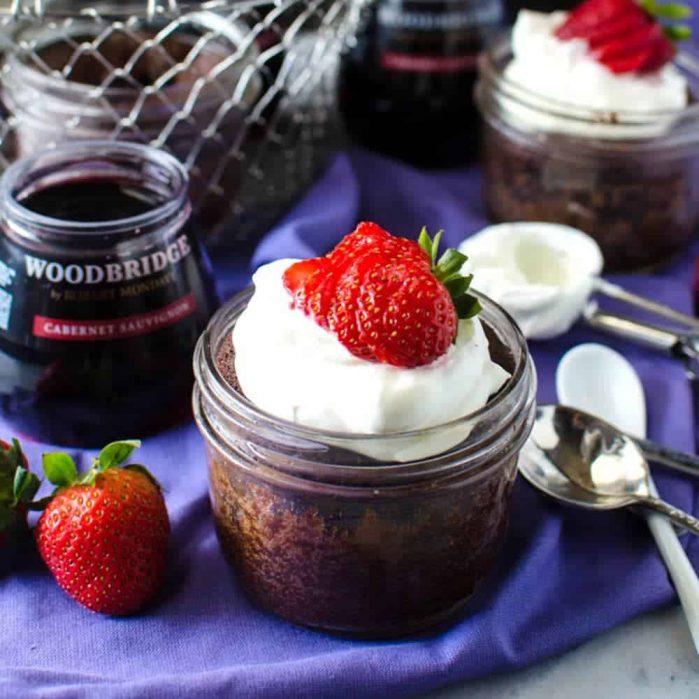A comprehensive guide to making delicious vanilla cake as an 8 inch cake, 9 inch cake, sheet cake, and even vanilla cupcakes, with vanilla buttercream frosting OR chocolate buttercream frosting. Every cake baking adventure starts with a good Vanilla Cake! It’s the universally loved cake flavor that acts as a great canvas on which to build other flavors. I already have an extensive repertoire of cake recipes on the blog (including the classic chocolate cake, classic white cake, coconut cake, devil’s food cake, coffee cake, lemon cake, butter cake, ribbon cake, and even classic vanilla cupcakes). But a classic vanilla cake in its simplest form and all its glory is hard to beat! So here, I’ll show you how to make the BEST Vanilla Cake recipe that I’ve ever had, and share all the tips and step by step instructions that you’ll ever need to adapt the recipe to your preferences. These tips will ensure PERFECT results, every single time. Plus, I’ll share a couple of simple variations on this Classic Vanilla Cake Recipe as well. These variations include a simple citrus scented vanilla cake, and a classic Sri Lankan ribbon cake!
Why is this the best vanilla cake I’ve ever had
It’s so buttery and it’s super easy to make. This homemade vanilla cake is light, with a soft crumb, thanks to the oil in the recipe. Deliciously moist cake, even better than a bakery style cake! Great vanilla flavor that pairs well with a variety of frostings. Recipe works perfectly as a layer cake, sheet cake, or even cupcake! It’s incredibly versatile. Stays fresh for days! And most of all, I show you how and why things work the way they do, so that you can adapt the vanilla cake recipe to your taste!
This cake is also FANTASTIC as a birthday cake. I know, because I’ve made it for dozens and dozens of birthdays, and other special occasions. Since the cake has a lovely vanilla flavor, it pairs very well with any vanilla buttercream frosting, or chocolate buttercream frosting too (Swiss meringue buttercream or American vanilla buttercream)! You can even frost the cake with a delicious cream cheese frosting. My homemade vanilla cake is different from my butter cake, because the crumb is lighter here and the cake is a little sweeter. This is because I use half butter and half oil for the creaming stage. It’s also not too eggy, or too buttery which means the flavor of vanilla is very prominent in this cake. Unlike my white cake recipe, this cake uses whole eggs, which give the cake a yellow tinge, and a richer taste. This cake is also NOT a sponge cake, which involves whisking eggs to a foam. Instead, this cake relies on the classic creaming method. If a cake uses egg foam, then it’s a sponge cake and not a classic butter cake. Also this cake is not a yellow cake, although it does have a yellow tinge from the egg yolks. This is because yellow cakes rely on having extra EGG YOLKS to give the cake an even richer flavor. So, here’s how to achieve Classic Vanilla Cake Perfection, step by step.
Tips to make the recipe even easier
Make sure ALL the ingredients are at room temperature before you start. Use a kitchen scale to measure the ingredients, especially flour. Measuring cups can result in the unintentional addition of too much flour. This will make the cake dry. Prepare the cake pans before you start making the cake batter. You can use baking strips (soaked in water) to get even cake layers, if you prefer. Let the cakes cool on a cooling rack. Cool the cakes to room temperature before decorating. Wrap the cooled cake layers well with plastic wrap, if you’re not using them right away.
Tips for decorating the cake for a professional look
Use a serrated knife to slice off any domed tops on your cake layers. Alternatively, you can use a cake leveler to slice off the tops as well. This is the one I use for most of my cakes. For a stable cake, place the bottom layer of the cake on a cake board / cake plate, with the flat bottom of the cake facing down. Use a little buttercream to stick the cake layer to the board. To get a flat surface on your cake on top, place the final layer with the flat bottom facing up. If your cake has multiple layers, use an ice cream scoop or measuring cup to measure equal amounts of buttercream for each layer. If your cake has a softer filling (like lemon curd or vanilla pastry cream), pipe a border of buttercream along the edge of the cake layer (to create a dam). Then spread the filling in the middle. The buttercream “dam” will secure the filling in place. Apply a crumb coating on the cake. This is a thin layer of buttercream that covers the whole cake. Then let it set in the fridge or a cool place for about 1 hour before proceeding with frosting the cake. This serves two purposes. Makes sure the cake has straight sides, and a level top. The crumb coating will fill any crevices. Makes sure there are NO cake crumbs visible, once the cake is decorated.
How to make perfect vanilla cake
STEP ONE – Mixing the butter + oil + sugar
There are TWO ways to START making this homemade vanilla cake. That’s either by mixing the melted butter + oil with the sugar (you wouldn’t need a hand-mixer for this, you can use a whisk instead), OR by creaming the room temperature butter + oil with the sugar by using a hand-mixer or stand mixer. These two methods will result in vanilla cakes that are SLIGHTLY different in texture as explained below. Melted butter + oil + sugar + mixed with a whisk – since air is not incorporated into the batter here, the cake will not have the same height as in the following method, and the cake crumb will be slightly fudgy (or more dense). Softened butter + oil + sugar + creamed with a hand mixer until light and fluffy – since air is incorporated into the batter here, the resulting cake will have more height, and will be a little lighter.
Why I use oil and butter in the cake
With oil, the resulting cake has a softer texture and a lighter crumb. Because there are no milk solids in oil (unlike in butter), it allows the cake crumb to be finer and lighter. In contrast, with butter, the resulting crumb is more dense, and there’s more moisture in the cake too. This is due to the milk in the butter which contributes to the dense crumb. However, it adds more flavor than oil as well. So while I do love an all butter cake, I prefer using BOTH butter and oil for my homemade classic vanilla cake, because this way I get the best of both worlds – plenty of flavor AND a delightfully light texture.
STEP TWO – Adding the eggs
You can add all of the eggs together OR add the egg one at a time. I prefer to add them one at a time, mixing in each egg before adding the next. This also comes down to incorporating air into the batter so that you have a lighter and fluffier cake.
STEP THREE – Adding the milk/buttermilk + VANILLA!
There are two ways in which you can add the milk to the batter. You can either alternate between adding the milk and the flour, OR you can add all of the milk first, mix it in, and then add the flour. You can also choose between buttermilk, OR full cream milk (or half and half) mixed with vinegar or lemon juice. This choice won’t affect the quality of your vanilla cake.
Choosing the right vanilla
One of the most important steps in a vanilla cake is obviously the vanilla! So make sure to add a GOOD vanilla extract because this can make or break the flavor of your homemade vanilla cake. A lower quality vanilla (imitation vanilla) will compromise the flavor of your cake. Adding too much imitation vanilla may also make the cake bitter. So look for a VANILLA EXTRACT, rather than imitation vanilla. Better yet, look for Madagascar bourbon vanilla, which is a very flavorful vanilla extract. You can use vanilla bean paste (or fresh vanilla) as well, if you choose.
STEP FOUR – Adding the flour + leavening agents to your vanilla cake batter
Sift the all purpose flour + baking powder together. This is important because it evenly mixes the ingredients together and removes lumps. If you’re like me, and don’t feel like sifting the flour sometimes (especially if the flour is pre-sifted), then place the dry ingredients together and whisk it all together. This allows the dry ingredients to be evenly distributed when you fold them into the cake batter.
How to prevent overmixing
I like to add the flour into the vanilla cake batter in 2-3 additions, so that I can make sure each addition is well incorporated into the batter and most importantly, there are no lumps. While I like to use a whisk or spatula to fold in the flour, you can use a hand-mixer or stand-mixer (for double batches) on the LOWEST speed. However, keep in mind that the more you mix the flour, the more you “work” it, and the more you develop gluten which will result in a tougher / rubbery cake. So it’s important that you only mix the flour until it’s just incorporated (a few white streaks are OK). Another option would be to use CAKE FLOUR instead of all purpose flower, which has less gluten than AP flour. If using cake flour, substitute the AP flour with the same amount of cake flour BY WEIGHT.
STEP FIVE – Baking the cake
I baked this cake in 8 inch pans for a 2-layered cake. But you may be wondering if you could bake this cake in a 9 inch pan or as a sheet cake? Why yes, you totally can!
How to prepare cake pans for baking?
Preparing the cake pans for this easy vanilla cake is simple, but it’s probably my least favorite part as well. My sister used to be my designated pan preparer (and taste-tester of course), but now I got to do that myself. I find that parchment paper makes my job easy. I ALWAYS line the bottom of the pan with parchment paper. For round pans, I butter and flour the sides, but I usually use parchment paper to line the sides of square or rectangle pans. I just go with whichever feels convenient at that moment in time. I personally don’t like using non-stick sprays for my cake pans, but you CAN use baking goop if you like (homemade non-stick paste), and this recipe from Sugar Geek Show would be a recipe that I trust.
Could or should I use baking strips?
YES! You can use baking strips for a more even, flat surface on your cake. I do use them when I want to make a naked cake (baking strips will keep the sides from turning brown, and will keep the cake surface flat). But I don’t really bother with them for home baking.
The bake times for different sized cake pans
2 x 8 inch pans = bake for 25 – 30 minutes (mine takes about 27 minutes). 2 x 9 inch pans = bake for 20 – 25 minutes (mine takes about 22 minutes). 9 x 13 cake pan (for a sheet cake) = bake for 30 – 35 minutes (mine takes about 32 minutes). Cupcake pans = bake for about 15 – 20 minutes (mine takes about 17 minutes).
How do I know if my cake is done?
I prefer baking my cakes at 325°F / 165°C because it bakes the cake more evenly, even though it takes just a tad longer. The best way to tell if your cake is done is by using a cake tester or toothpick inserted into the center of the cake. If it comes out clean, then the cake is ready!
How can I test the cake done-ness WITHOUT pricking the cake?
If you press the center of the cake surface, and if the surface springs back up, then the cake is done. But if that indentation remains, then the cake could use a few more minutes of baking. The sides of the cake also pull away from the sides of the pan, ever so slightly. Just make sure to check the cake regularly towards the end to avoid over-baking the cake. Because an over-baked cake is a dry cake. No good.
STEP SIX – Decorating the cake
There aren’t any rules when it comes to decorating your homemade vanilla cake! 🙂 Well, other than just waiting till the cake has cooled down completely. Because if the cake is warm, the frosting will melt.
Place the cake layers on a cooling rack to cool completely. If the cake is domed on the top, use a serrated knife to slice off the top to make it evenly flat.
You can decorate your vanilla cake with my vanilla buttercream frosting or my chocolate buttercream frosting. You can also use vanilla swiss meringue buttercream or chocolate swiss meringue buttercream. Cream cheese frosting is also a great choice.
You can also choose to frost your cake with a smooth, straight edged finish, or go rustic. Check out the images here to see how I fill and frost a cake to make a birthday cake. Or if you’d like to create a fun water color effect on your cake, follow the method that I used in this colorful pastel Easter cake.
This recipe is hands down THE BEST VANILLA CAKE I’ve ever had and made! And I’m sure it’ll be yours too! 🙂 A deliciously buttery, light, moist, soft vanilla cake. As classic as it gets.
When I was younger, my favorite way to eat vanilla cake was with chocolate frosting. But now, as you’d expect, I go the classic way! Which is a delicious and fluffy vanilla buttercream.
This Classic Homemade Vanilla Cake is a firm reader-favorite too!
When I was living in Sri Lanka, we used to make vanilla cakes that were colored and swirled into what we called “ribbon cakes”. This was a very popular and whimsical option for birthdays and celebrations. You can check out how to do that with this ribbon cake recipe here!
Storing the vanilla cake for later
This homemade vanilla cake can be made in advance. The cake layers freeze beautifully, and can be made well in advance. Here is how to store the vanilla cake layers for later. Once the cake layers have cooled to room temperature, wrap each layer with 2 layers of plastic wrap. These cake layers can be stored in the fridge overnight, or up to 3 days. To store them for longer, place the wrapped cake layers on a baking tray (in a single layer) and freeze. Once frozen, they can be stacked on top of each other. Cakes can be frozen for up to 3 months. Let them thaw out in the fridge before you use them. The frosted cake will be good for about 1 week. Make sure to store the cake in an air-tight container. Reduce contact with air, since this will dry out the cake.
If you liked this cake, then you will LOVE,
Swirled pastel Easter cake Perfect buttery pound cake Classic white cake White coconut cake (Winter cake) Lemon cake Vanilla cupcakes
Is chocolate cake more your jam?
Classic chocolate cake The fudgiest one bowl chocolate sheet cake Devil’s food chocolate cake Chocolate bundt cake Chocolate cupcakes
